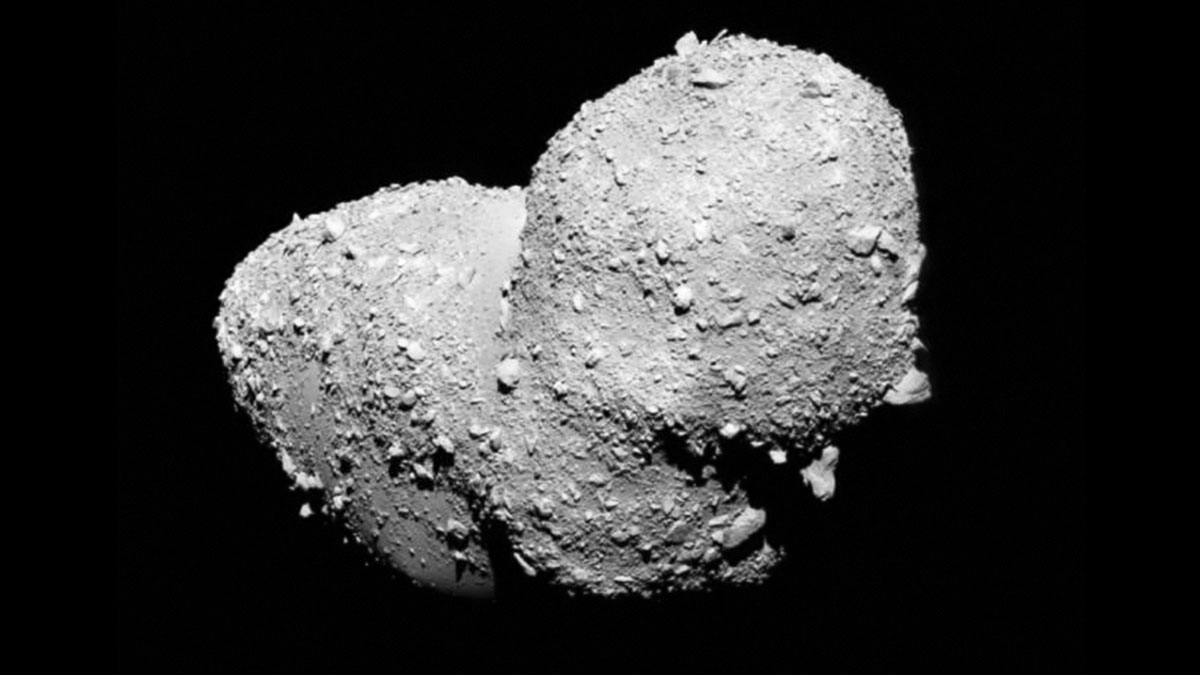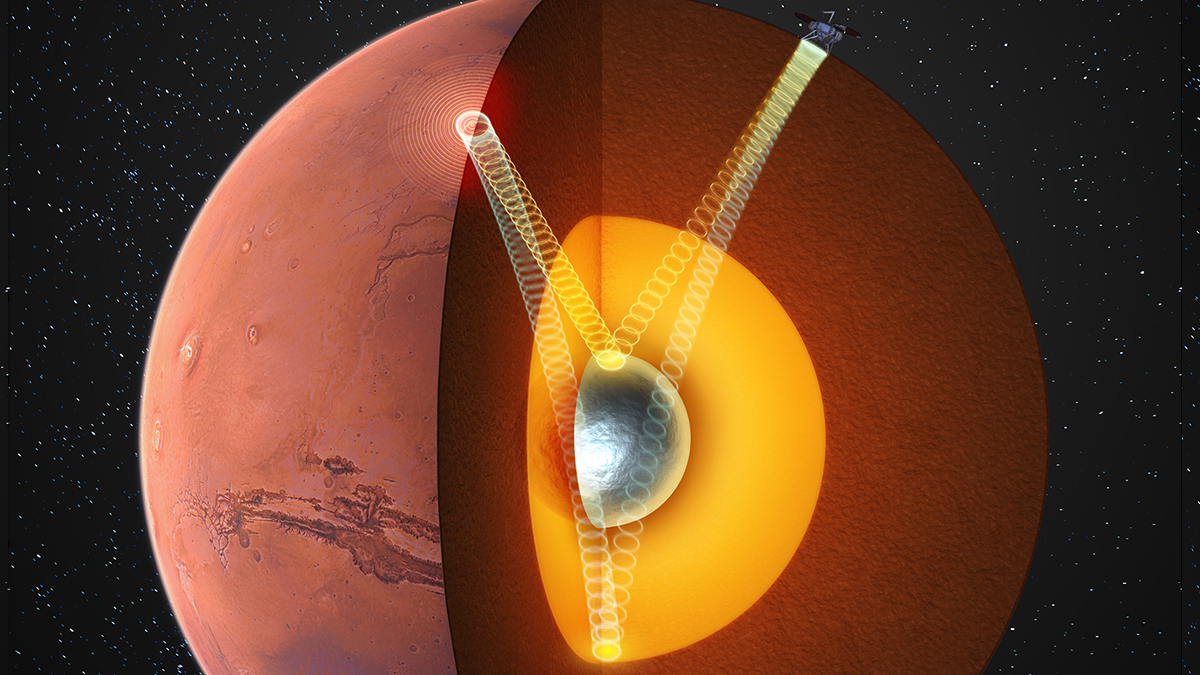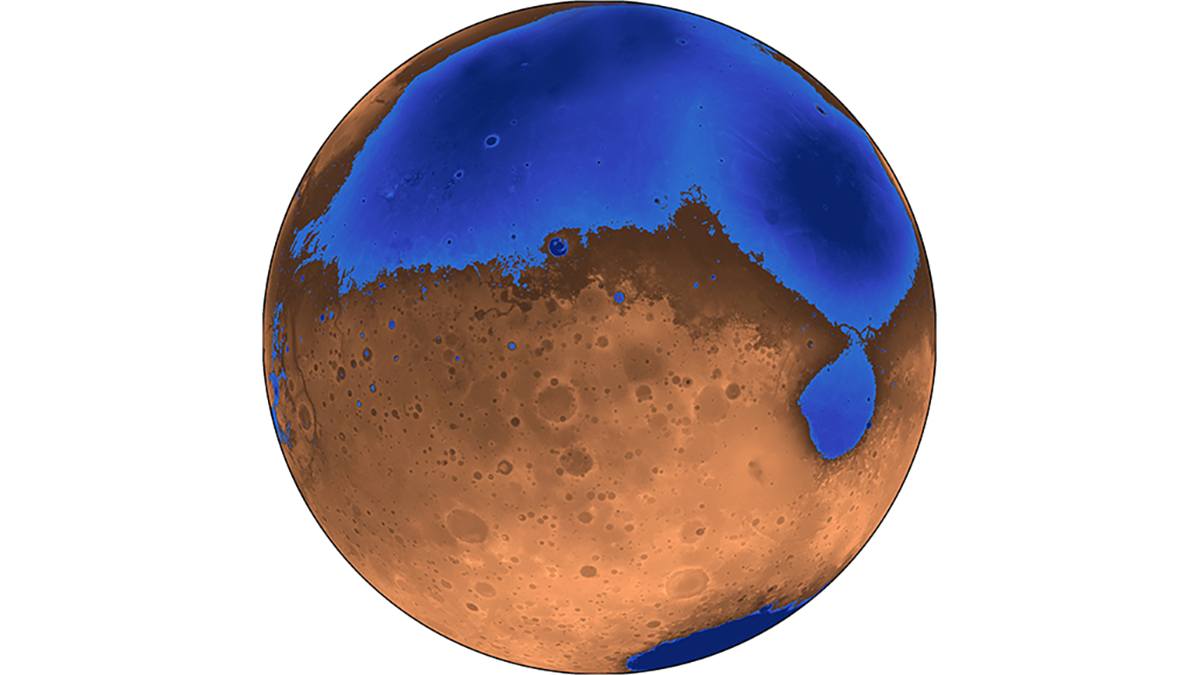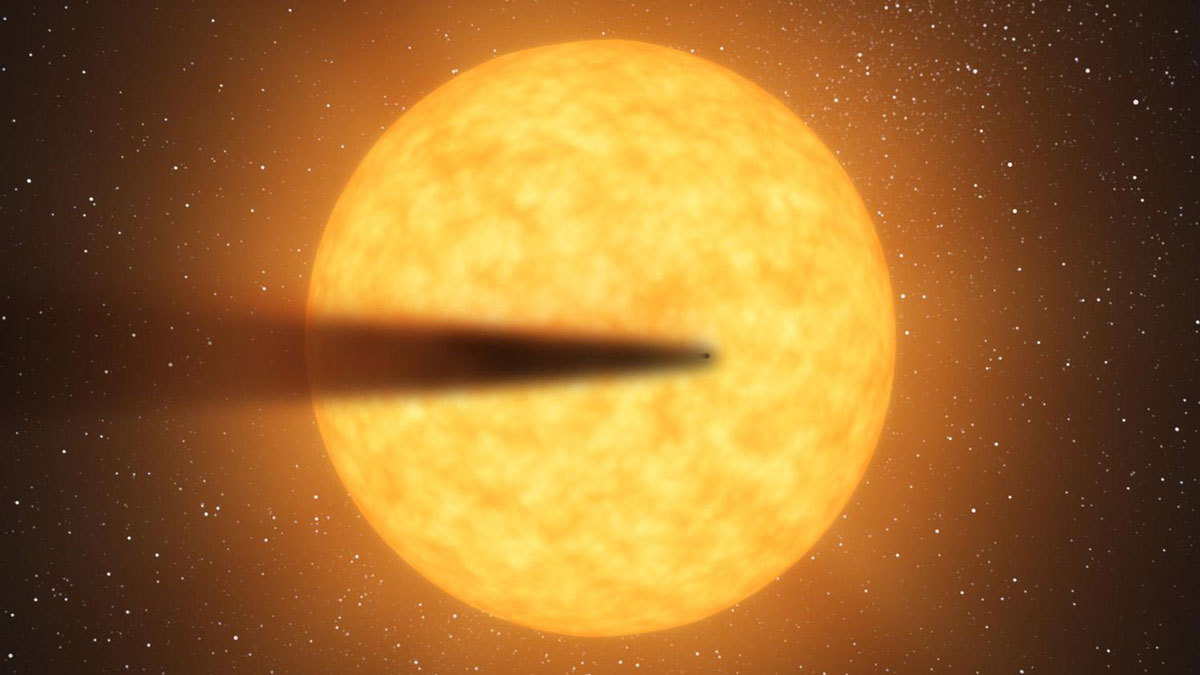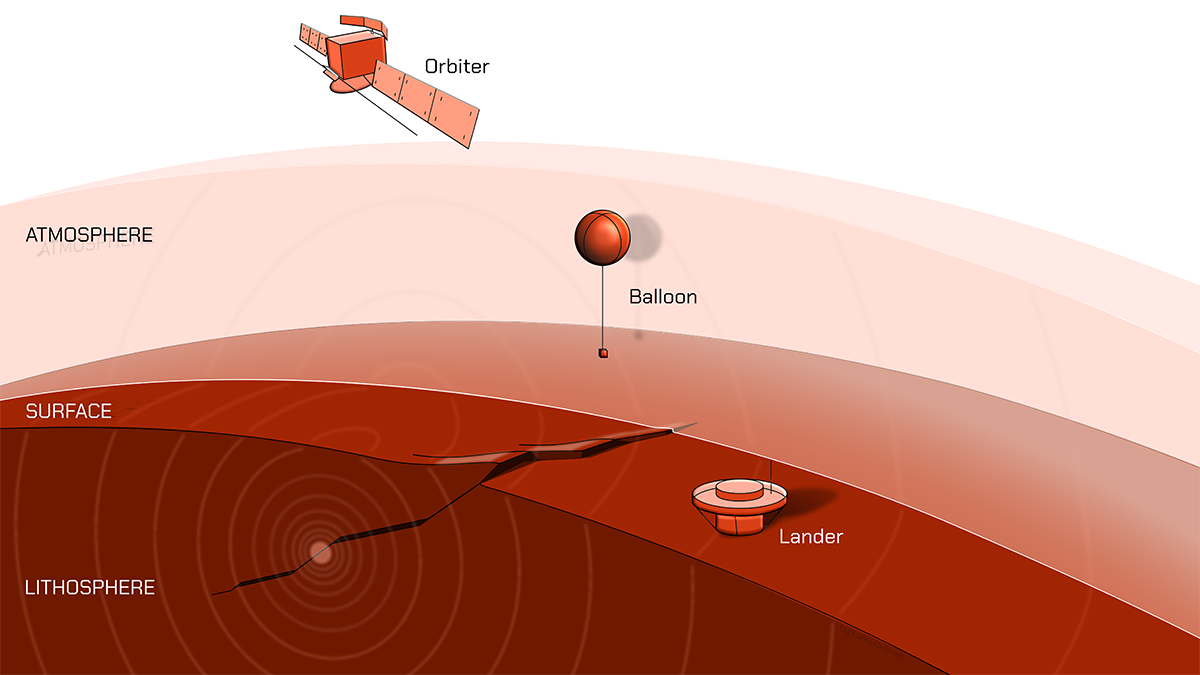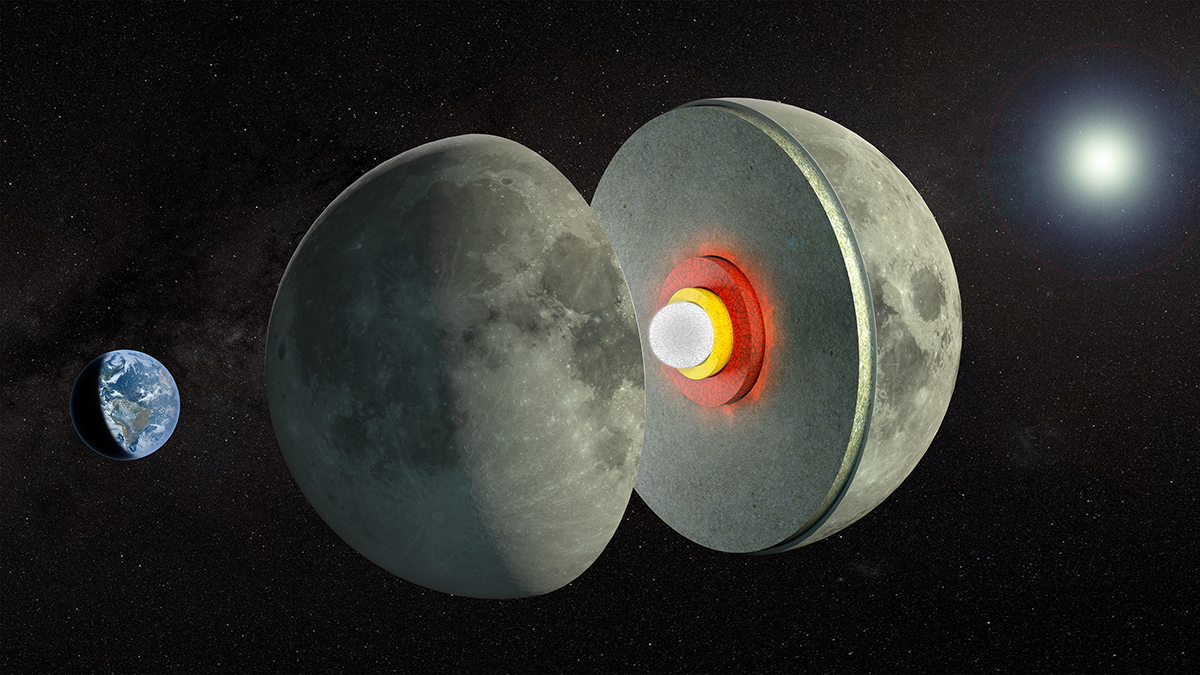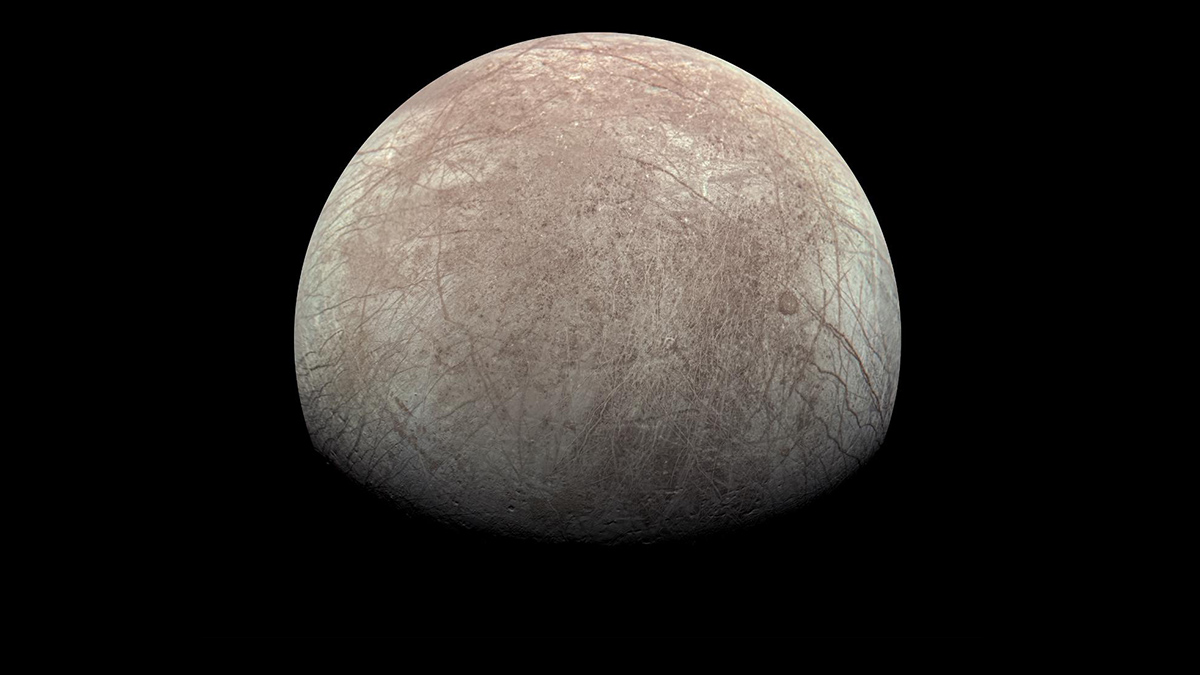Data from the Gaia space observatory reveal that many slowly spinning asteroids rotate chaotically. A new theory links that chaos to their inner structure and history.
planetary interiors
Scientists May Have Finally Detected a Solid Inner Core on Mars
Seismic clues from NASA’s InSight mission suggest that Mars hides a solid inner core, and raise new questions about why the planet’s magnetic field disappeared.
Buried Sediments Point to an Ancient Ocean on Mars
Ground-penetrating radar data collected by the Zhurong rover reveal gently sloping sediments in Mars’s northern lowlands that hint at a shoreline.
Scientists Finally Get a Good Look at a Disintegrating Exoplanet
The James Webb Space Telescope offers astronomers a rare glimpse into the chemical composition of a rocky planet’s interior—and the results are “very surprising.”
Three Ways to Track Venusquakes, from Balloons to Satellites
The planet’s harsh conditions make studying seismicity challenging, but it is likely possible.
Clipper Sets Sail for an Ocean Millions of Miles Away
Europa Clipper will assess whether Jupiter’s moon has the right ingredients to host life, and could illuminate the mysteries of icy worlds throughout the solar system.
The Moon’s Tides Hint at a Melty Lunar Layer
New lunar gravity measurements support the idea that a partially molten mantle layer is sandwiched between the rest of the Moon’s mantle and its core.
Europa’s Ocean Might Lack the Ingredients for Life
The lack of volcanism and tectonic activity on Europa’s seafloor might hinder the moon’s potential to host living organisms.
Fiber-Optic Networks Could Reveal the Moon’s Inner Structure
Distributed acoustic sensing offers a cost-effective alternative to traditional seismic arrays, and building such a network on the Moon might be possible.

